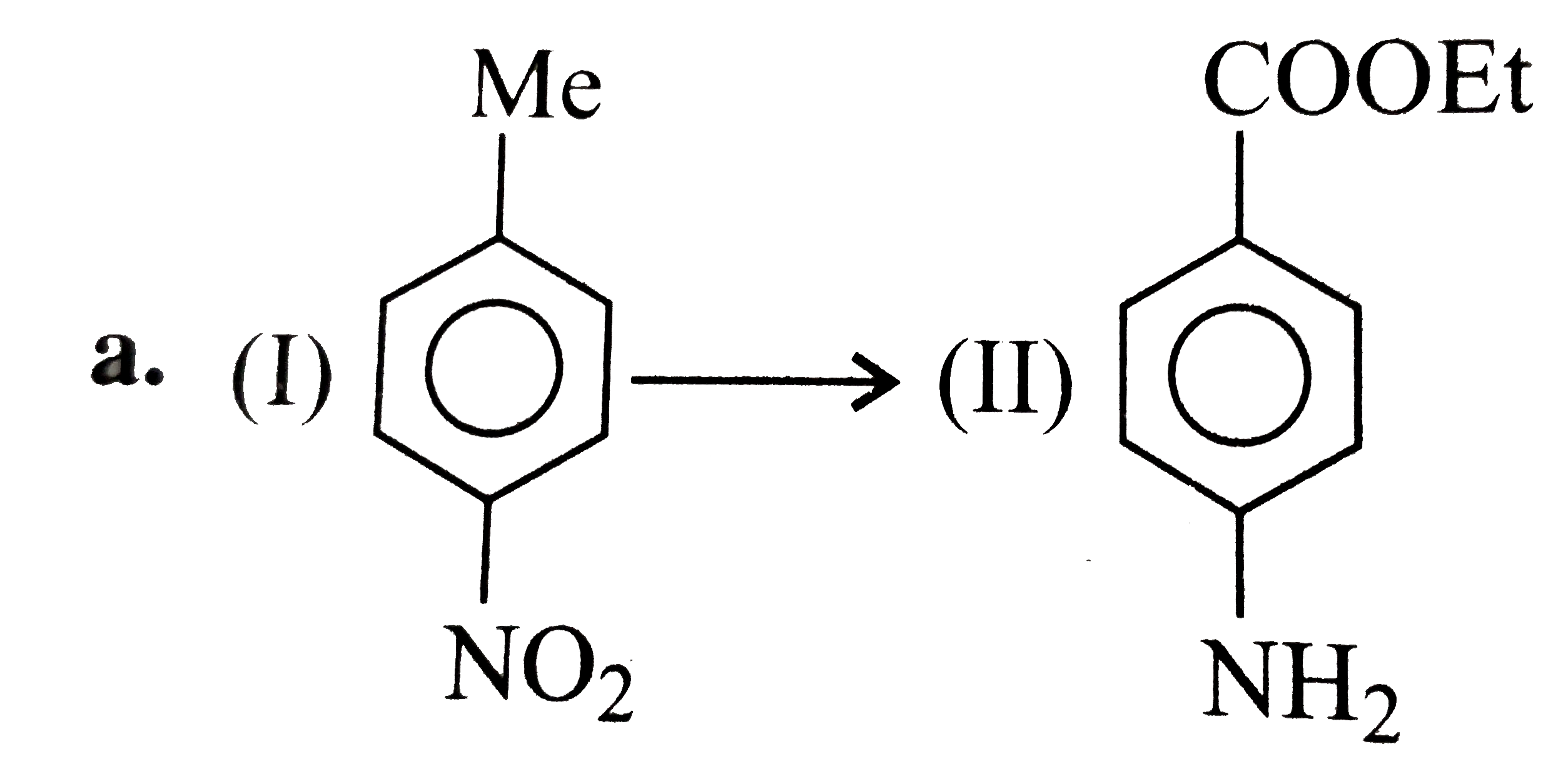Complete Solutions to Illustration 15.1 of chapter ORGANIC COMPOUNDS WITH FUNCTIONAL GROUP of Class 12 book with complete answers and questions
| Class 12 | CHEMISTRY |
| Chapter | ORGANIC COMPOUNDS WITH FUNCTIONAL GROUP |
| CENGAGE CHEMISTRY | Illustration 15.1 |
| Number Of Questions | 25 |
| Academic Year | 2023-24 |
Give the decresing order of boiling points for the following :
I. `Et_2NH`
II
View SolutionGive the decreasing orderof solubility of the following in`H_(2)O`:
(I)`PhNH_(2),(II)Et_(2)NH,(III)EtNH_(2)`
View SolutionWhy is an an amine of the type ` RR'R''N chiral and why cannot their enamtimers be separated ?
View SolutionArrange the following in the decreasing order of their basic strength :
i. `PhNH_2` ii.` EtNH_2 ` iii. `Et_2NH` iv, `NH_3`
View SolutionWrite chemical reactions for the following :
a. Reaction of ethanolic `NH_3` with ` EtBr`.
b. Ammonolusis of benzlbromide and reaction of amine so formed with 2 mol `Me Br`.
View SolutionPrepare R-NH2 by Gabriel synthesis .
View Solutiona. What kind of halides cannot be used to alkylate an amine :
b. Give the first amine formed from the reaction of ` I. MeCl + EtNH, II, CH_2 = CHCH_2Cl + Me_2 NH`, and III. ` PhCH_2 Cl + EtNHMe`.
c. Identify (A) to (E ).

d. Complete the following reactions :
i.
View SolutionComplete the following :
i.`
View SolutionComplete the folllwing reactions :
a.
b. `PhCH=O+PhNH_(2) rarr underset((A))(["Intermediate"]) overset(H_(2)//Ni)underset(or NaCNBH_(3))rarr(B)`
View SolutionComplete the following reactions :
a. ` Et_2 NH + Ph SO_2 Cl rarr `
c. ` PhCH_2 NH_2 + HCOOH overset (Delta)(rarr)`
c. ` PhNH_2 + PhCHO rarr`.
View SolutionIdentify Product (B):
a.
View SolutionExplain :
I. Dehydrohalogenation of `
View SolutionComplete the following :
a. `
b. Give the products of the following by application of Hofmann's exhaustive methylation and elimination :
 .
.
View SolutionGive the alkene formed on heating the following (Hofmann degradation) :
i. `[overset(beta)(CH_(3))overset(alpha)(CH_(2))-overset(Me)overset(|)underset(Me)underset(|)(N)-overset(alpha)CH_(2)-overset(beta)(CH_(2))-CH_(3)]^(o+)overset(Theta)OH`
View SolutionGive the decreasing order of reactivity opf diazonium ion coupling with phenol.
I. `p-NO_2-C_6H_4 overset (o+)N_2` II. `p-Cl-C_6 H_4 overset (o+) (N_2)`
III. `C_6 H_5 overset (o+) (N_2)` IV. `p-Me-C_6 H_4 overset (o+) (N_2)`
V. ` p-MeO- C_6 H_4 overset (o+) (N_2)`
View SolutionGive the decreasing order of reactivity for the following coupling compounds with ` PhN_2 Cl`.
a. I. Aniline II. Phenol III. Toluene IV. Chlorobenzene V. Nitrobenzee
b. I. toluene II. Ethyl benzene III. Cymene IV. T-Butyl benzene V. Anisole .
View SolutionExplain whty 2,4-dinitrobenzen diazoninum ion couples with anisole byt ` PhN_2^(o+)` does not. Write the coupling reactio .
View SolutionSynthesise benzylamine `(PhCH_2NH_2)` by
a. Hofman degradation
b. Reductive amination
c. Alkyl halide amination
View SolutionStarting from benzene or toluene or aniline and with the aid of diazonim salt synthesis the following :
a. p-Nitrobenzene
b. p-Cyano benzoic acid
View Solutiona.Convert the following
a.
View SolutionIdentify (A) and (B).
` .
.
View SolutionIdentify (A) to (E ) and write chemical equations for the vairous reactions involed .
`
View SolutionGive the major alkene resulting from the thermal decomposition of hydroxide salt of the following:
`[Phoverset(o+)(N)Me_(3)]overset(Theta)(OH)`
b. .
.
c.
View SolutionGive the product obtained on heating the following :
a. .
.
View SolutionComplete the following :
` .
.
View Solution
Illustration 15.1 questions and complete solutions for chapter ORGANIC COMPOUNDS WITH FUNCTIONAL GROUP of CENGAGE CHEMISTRY (ENGLISH) of Class 12
All Exercises from CENGAGE CHEMISTRY Class 12 CHEMISTRY ORGANIC COMPOUNDS WITH FUNCTIONAL GROUP
- Archives Analytical And Descriptive
- Archives Assertion-Reasoning
- Archives Fill In The Blanks
- Archives Multiple Correct
- Archives Single Correct
- concept application 4
- Exercises Assertion And Reasoning
- Exercises Concept Application
- Exercises Linked Comprehension
- Exercises Multiple Correct
- Exercises Single Correct
- Exercises Subjective
- Illustration 15.1
- Solved Examples